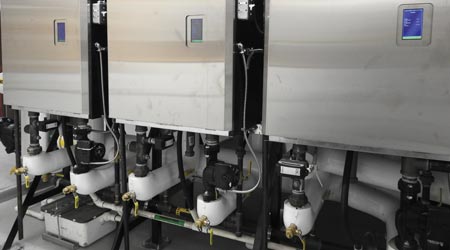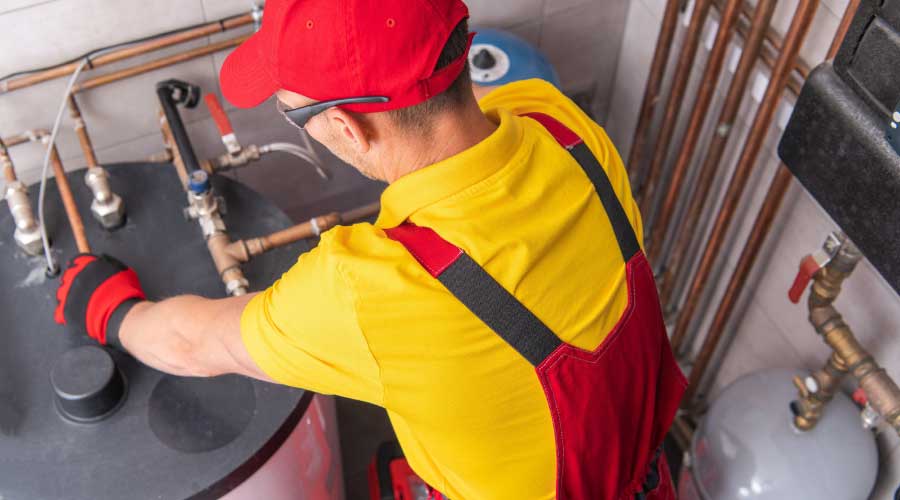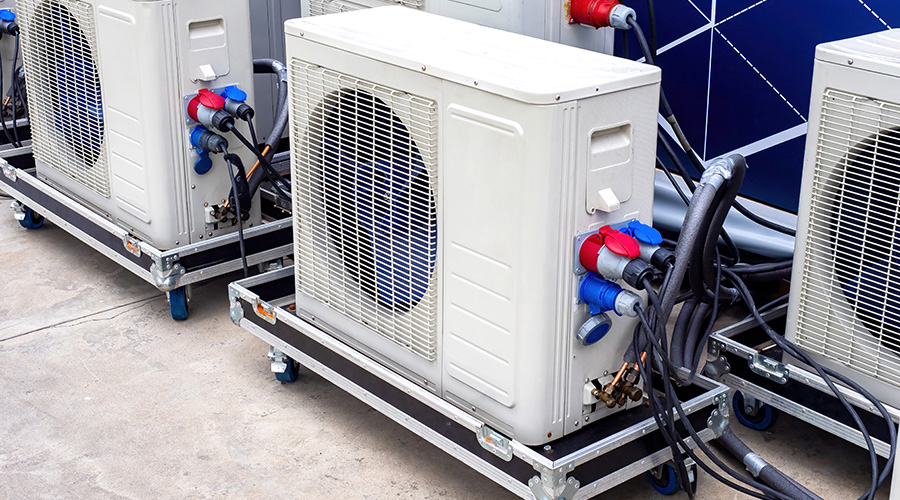What You Need to Know About Stand-Alone Boiler Controls
Three categories of stand-alone boiler controls can offer huge advantages for facilities managers.
With all of the buzz surrounding the Building Internet of Things, building automation systems, and augmented or artificial intelligence networked controls, a facility manager might assume that those options are always preferable to stand-alone boiler controls. But that isn’t the case. Stand-alone boiler controls offer a range of capabilities that meet the needs of many facilities at a lower cost than the more advanced digital technologies.
Many facility managers have good reasons to hold off on embracing the more advanced boiler control technologies. Some of their concerns include:
• Security: Keeping a facility isolated from cyberspace keeps the cyber bad guys out.
• Simplicity: Many facilities do not have complex control needs and can be adequately controlled and monitored by self-sufficient on-site operators.
• Control life cycle: To avoid obsolescence, sophisticated network controls often require expensive ongoing upgrades.
• Costs of consulting, procurement, installation, staff training, and ongoing monitoring: Often, there is simply no payback versus carefully selected stand-alone controls.
Counterintuitively, some of the largest boiler rooms need the least connectivity, as they are constantly attended by on-site operators trained in the specific ways to finesse the operation of the plant. Often, the smaller facilities benefit most from remote monitoring and intervention, and facility managers should take a careful look at each facility in detail to determine which way to go.
Stand-alone boiler controls come in a variety of flavors. They can easily be interfaced with the BAS through mechanical relay on/off (enable) commands and monitored with sensor inputs connected via the DDC control equipment, but they cannot be adjusted from a remote location, and their internal data (if they contain any) cannot be read directly by external devices.
There are three main categories of stand-alone boiler controls. Here’s what facility managers need to know about each.
Basic controls
Stand-alone basic controls typically add a temperature “operating” device as the outer layer of control. Common examples include the many boilers that are still available with simple electro-mechanical, temperature-actuated on/off switches to allow the boilers to cycle on and off at a fixed temperature below the high limit temperature. These controls may or may not have the ability to operate boiler or system pumps through mechanical relays.
From there, the level of sophistication increases through to electronic controls that can use an outdoor sensor and software to adjust the outlet temperature based on the weather. Some add an indoor sensor, to further optimize the supply temperature to match the building’s requirements.
Controls that add burner modulation or multiple boiler staging have become very popular in the quest for greater efficiency, especially in buildings that have a highly variable load, such as those with a large number of active zones. These controls are typically enabled by a single input, which can come from one thermostat, a consolidated input from multiple zones, all the way up to an enable input from a BAS. Once enabled, the controls operate the boiler as designed until the enable signal is withdrawn.
Stand-alone controls allow boiler operation to be easily modified on-site by operators and service personnel, and overriding them is usually quite simple during emergency and maintenance procedures. This can be an advantage or not, depending on who has access to the boiler room.
Smart controls
Stand-alone smart controls started to appear about 25 years ago when electronic digital controls made their way into boiler architecture. They are layered outside of the boiler basic safety circuit and have the advantage of being capable of compiling and logging data, and responding to internal faults. Most current models come equipped with an LCD or LED display, and many of them now have a touch-screen user interface for easy programming by building users.
Stand-alone smart controls can be fitted with sensors and digital inputs, and in some cases they manage limited safety functions via sensor input. They can also be provided with mechanical or analog electronic outputs, but fall short of true digital communication capability.
The data they contain can only be read via their own user interface displays but their functionality can be quite impressive nonetheless. A long list of functions — including error messaging with alarm outputs, data logging, diagnostic functions, historical trending like hours of use, service messages — are some of the popular options. They can also provide integrated operation of circulating pumps, staging of multiple boilers, and simple interface with other heating cooling, and ventilation devices.
There are a few notable manufacturers making add-on digital controls for the boiler aftermarket or as OEM-supplied options, but increasingly boiler manufacturers are developing proprietary controls in-house or in partnership with a third party developer and supplying them pre-installed as part of the boiler package. Some of these controls have the capability of feeding an analog signal to a BAS control for purposes of simple monitoring of heat output levels, and many have a digital alarm contact to alert the BAS system when a fault occurs.
Boiler/system controls
Stand-alone boiler / system controls take the basic smart control just described, and extend its reach beyond the boiler room to the rest of the building. With all of the features already listed, control manufacturers took advantage of the fact that smart controls can be fitted with any number of inputs and outputs and started feeding information from the rest of the building into the boiler control — either directly or by tailoring add-on companion controls. These controls can manage all of the system pumps in the building, read space temperatures, and operate zone valves and pumps based on inputs from these temperatures combined with the settings of individual thermostats or room sensors.
Many consumer model modulating condensing boilers now have integrated controls with all of the inputs and outputs that a smaller residence might need. Some boilers designed for the light commercial world can be ordered with stand-alone system control capabilities as well, but tend to use add-on modules to extend their functionality rather than try to pack everything into a single control. These systems work very well, can offer a sophisticated level of internal system integration at a bargain price, and are the preferred choice of many building owners — but remote access is limited. Staff training is still essential to be able to take full advantage of all that these controls can offer.
Roy Collver has more than 40 years of experience in the HVAC industry. He specializes in hydronics, with a tight focus on boiler technology, controls, and gas combustion. In addition to writing and training about HVAC-related subjects, he works in construction administration for mechanical engineering firms.
Email comments and questions to edward.sullivan@tradepress.com.
Related Topics:











